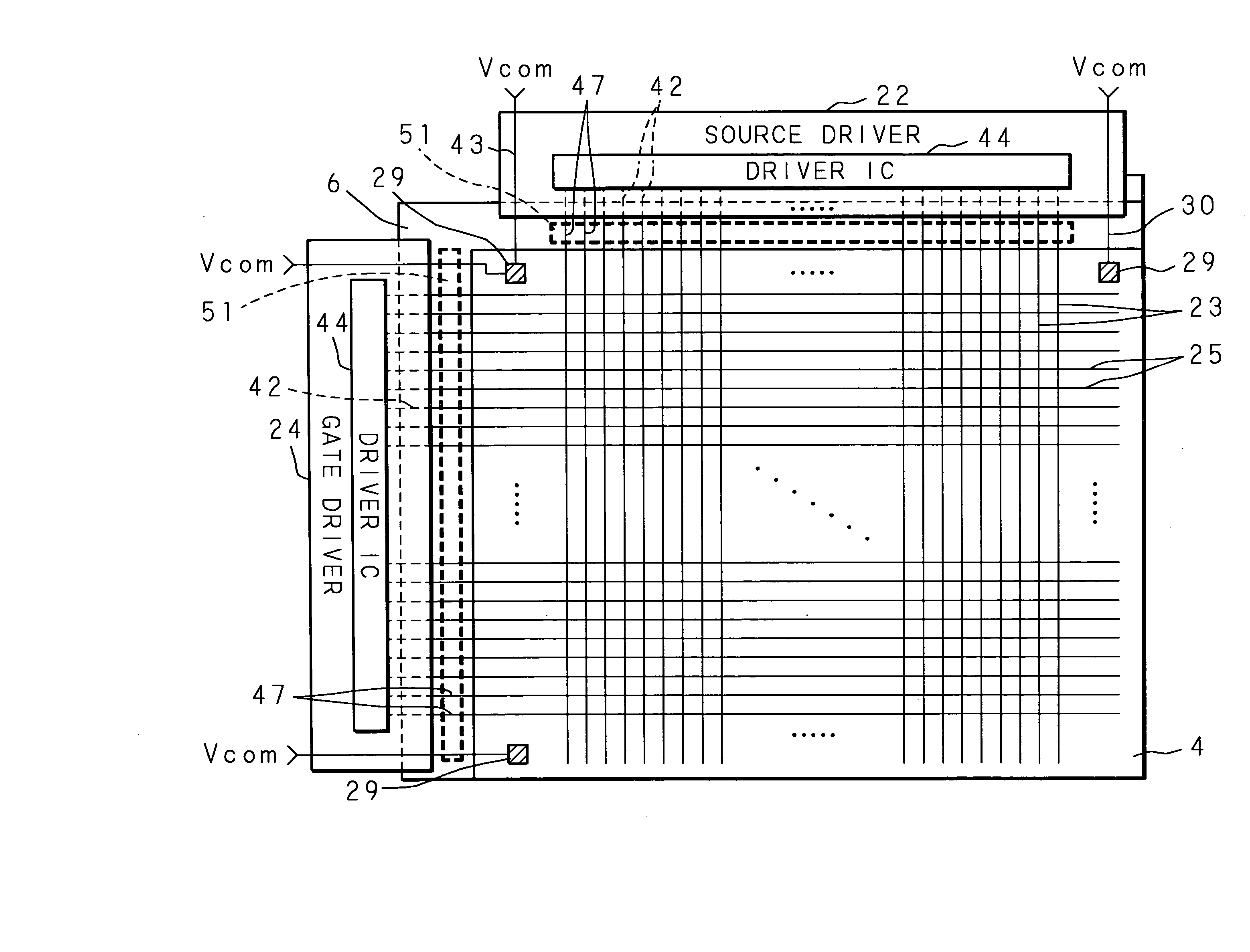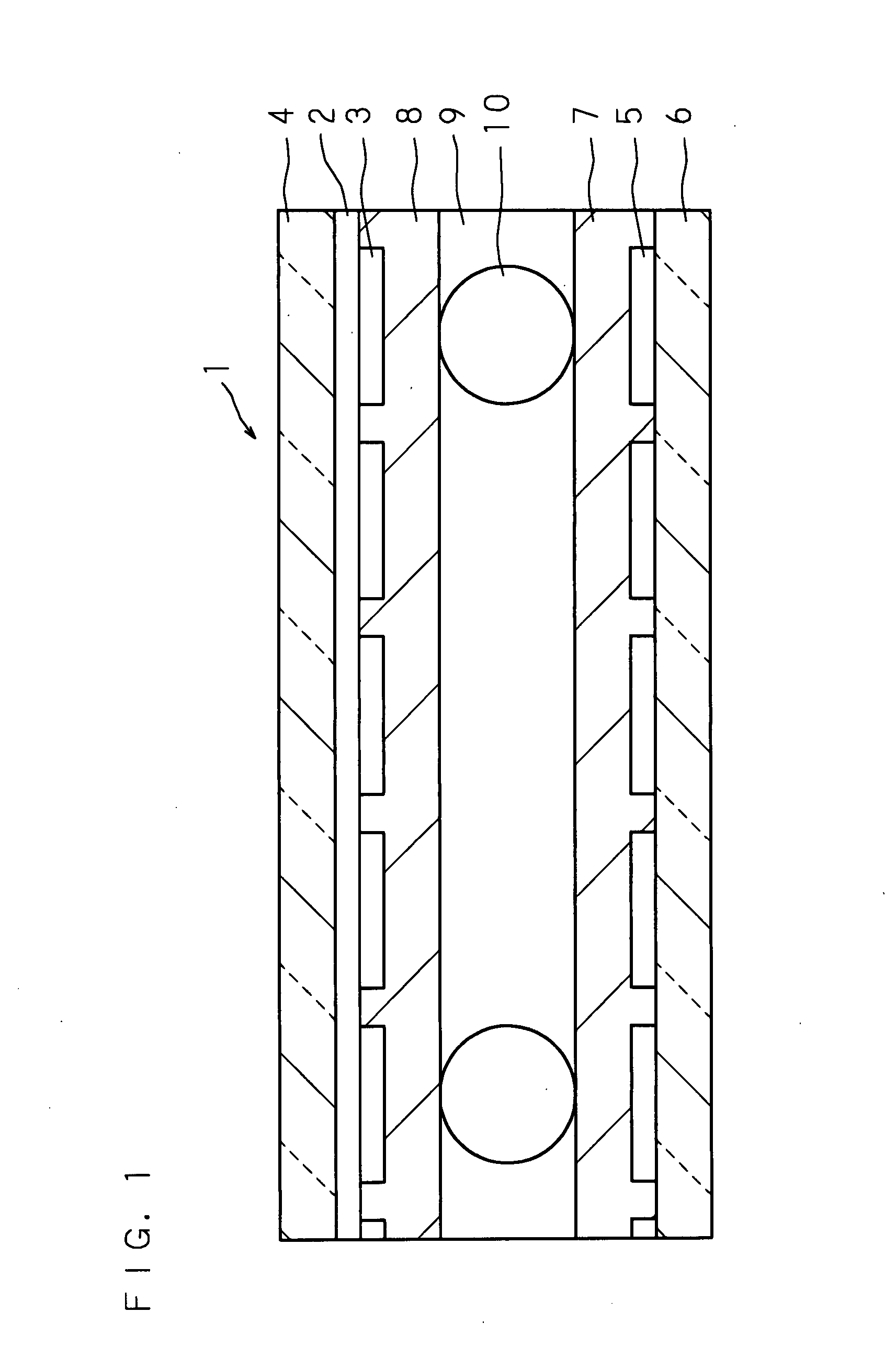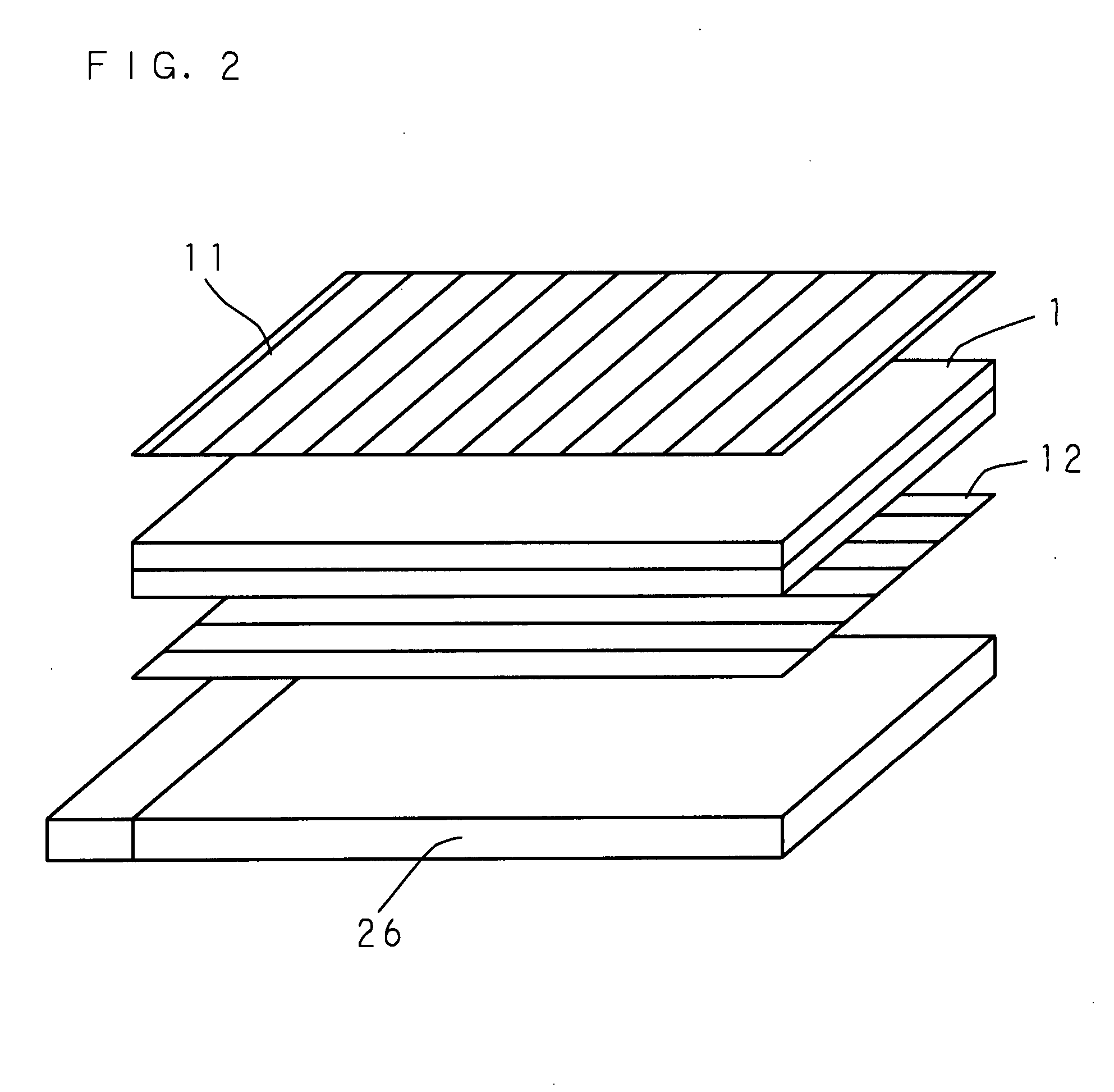Liquid crystal display device and alignment process method
- Summary
- Abstract
- Description
- Claims
- Application Information
AI Technical Summary
Benefits of technology
Problems solved by technology
Method used
Image
Examples
first embodiment
[0055]FIG. 1 is a schematic cross-sectional view showing a configuration of a liquid crystal panel. As shown in FIG. 1, a liquid crystal panel 1 includes a glass substrate 6 having pixel electrodes 5 (e.g., 0.08×0.24 mm2, number of pixels: 1024 H×3 RGB×768V, and 12.1-inch diagonal) composed of ITO (Indium Tin Oxide), disposed in a matrix form, and having an excellent light-transmitting property and TFTs connected to the pixel electrodes 5, respectively; and a glass substrate 4 having a counter electrode 2 and color filters 3 disposed in a matrix form.
[0056] An alignment film 7 and an alignment film 8 are provided on the pixel electrodes 5 and the color filters 3, respectively. The glass substrates 6 and 4 are disposed in such a manner that the alignment films 7 and 8 face each other. A liquid crystal layer 9 is formed by filling a ferroelectric liquid crystal into a space made by scattering, between the alignment films 7 and 8, spacers 10 (the shape is spherical, rectangular parall...
second embodiment
[0073] Since the configurations of the liquid crystal panel 1, the backlight 26, and their peripheral circuits according to a second embodiment are the same as those according to the first embodiment, the description thereof is omitted.
[0074] An alignment process of the second embodiment will be described. FIG. 6 is a diagram showing external voltage supply regions according to the second embodiment. In FIG. 6, the same parts as those in FIGS. 1 to 5 are denoted by the same reference numerals.
[0075] A region (a region surrounded by a dashed line in FIG. 6) where are put together all electrodes 47 which form part of the data lines 23 or the scan lines 25 connecting the driver IC 44 of the source driver 22 or the gate driver 24 which serves as a driving unit 40 to TFTs provided on the glass substrate 6, and which are on the side where the source driver 22 or the gate driver 24 is mounted, functions as an external voltage supply region 51 that receives, from the outside, application ...
third embodiment
[0079] Since the configurations of the liquid crystal panel 1, the backlight 26, and their peripheral circuits according to a third embodiment are the same as those according to the first embodiment, the description thereof is omitted.
[0080] An alignment process of the third embodiment will be described. FIG. 7 is a diagram showing external voltage supply regions according to the third embodiment. In FIG. 7, the same parts as those in FIGS. 1 to 5 are denoted by the same reference numerals.
[0081] A region (a region surrounded by a dashed line in FIG. 7) where are put together all electrodes 47 which form part of the data lines 23 or the scan lines 25 connecting the driver IC 44 of the source driver 22 or the gate driver 24 which serves as a driving unit 40 to TFTs provided on the glass substrate 6, and which are on the other side of the side where the source driver 22 or the gate driver 24 is mounted, functions as an external voltage supply region 61 that receives, from the outsid...
PUM
 Login to View More
Login to View More Abstract
Description
Claims
Application Information
 Login to View More
Login to View More - R&D
- Intellectual Property
- Life Sciences
- Materials
- Tech Scout
- Unparalleled Data Quality
- Higher Quality Content
- 60% Fewer Hallucinations
Browse by: Latest US Patents, China's latest patents, Technical Efficacy Thesaurus, Application Domain, Technology Topic, Popular Technical Reports.
© 2025 PatSnap. All rights reserved.Legal|Privacy policy|Modern Slavery Act Transparency Statement|Sitemap|About US| Contact US: help@patsnap.com



